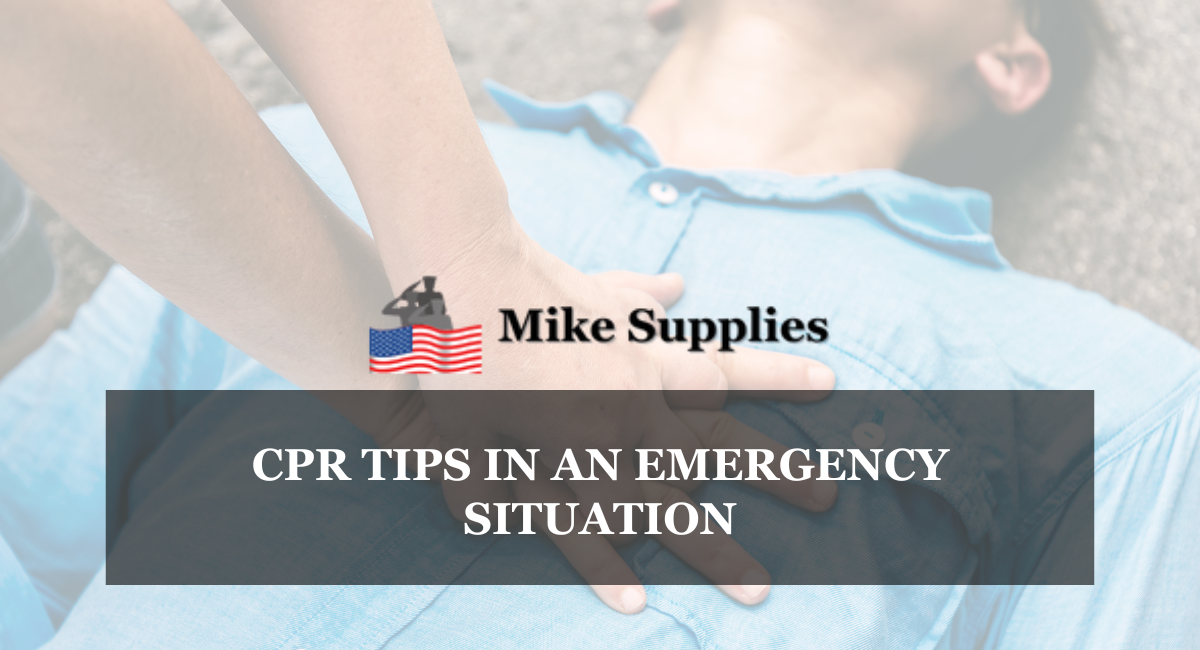In the last post, “HOW TO HANDLE AN EMERGENCY SITUATION”, I described a real scenario that I was involved in which required me to know BLS, Basic Life Saving training.
CPR is a major part of BLS skills. In my specific scenario, the unconscious man (who had suddenly passed out into the street)
DID have a pulse and was breathing regularly; however, this post goes over the CPR bullet points covering different various situations.
NOTE: THIS IS NOT A SUBSTITUTE FOR ACTUALLY TAKING A BLS/CPR TRAINING COURSE!!! THE CLASS IS ONLY A FEW HOURS OUT OF YOUR LIFE, AND MAY ACTUALLY SAVE SOMEONE ELSE’S!
If you are a true prepper and value self-reliance, you will value the importance of basic emergency medical training.
If you value self-reliance, you will value the importance of basic emergency medical training
First protect yourself, then protect the patient. If someone is in distress, you can’t necessarily go running blindly into the situation to help.
Rule #1 A) – don’t make the paramedics care for TWO people instead of just one. First, take a deep breath and survey the area. In my case, the unconscious man was laying in the middle of the street.
I shouldn’t have ran out into the street – I could have gotten hit by a car or caused an accident. I started out initially in my own car.
It would have been safer to pull up and park in front of the man and turn on my emergency flashers, then check to make sure no cars were coming before getting out and running over to him.
Rule #1 B) – don’t let the ill patient become injured again on top of the original injury.
Next, since he wasn’t in danger of dying if I moved him but WAS in danger of being hit by a car while laying in the street if I DIDN’T move him, I should have pulled the unconscious man over to the curb and gotten him out of the street.
Second, activate EMS (emergency medical services). This means CALL 911. If you don’t have a phone, tell another person on the scene to go find a phone and call 911.
Additionally, you can tell another person on the scene to go get an AED (Automated External Defibulator) if there is one in the area. A lot of restaurants, shops, pharmacies, etc. have an AED.
If you are a caregiver, or you live and play away from major towns and access to immediate medical treatment (if you live off-grid or spend a lot of time hunting or boating), or you are looking for items to own for the sake of preparedness in case the SHTF and you are cut off from emergency medical response, you will want to invest in your own AED.
Current CPR classes should include the training you need to operate the AED properly in a BLS situation.
If you do have an AED or somebody went and got one, perform CPR for 2 minutes first and tell the other person to turn on the AED while you are giving compressions.
After giving CPR for 2 minutes you can pause long enough to connect the AED pads to the person’s chest and activate the AED. Follow the directions given by the AED.
Third, check for consciousness, a pulse, and breathing IN THAT ORDER. Assess the person as either conscious or unconscious. If they’re conscious, then stay with them until the paramedics get there.
If they’re unconscious, they fall into one of two categories: those with a pulse and those without a pulse. If they have a pulse, go on to check on the quality of their breathing.
If they don’t have a pulse, begin chest compressions immediately. You don’t have to necessarily give them rescue breaths; just start compressing the chest (pretty hard- push about 2 inches down into the middle of an adult’s breastplate) at a rate of two compressions per second.
If you do also give them rescue breaths, first perform the chest compressions for 15 seconds (30 compressions), then two breaths at 5 seconds each breath (including the time for the chest to rise then fall back down).
Chest compressions in the absence of a pulse are much more important than the rescue breaths, so always start with the compressions.
A NOTE ABOUT RESCUE BREATHS: Use a protective CPR respiration mask to place a barrier between you and the patient’s mouth. It is perfectly acceptable to only provide rescue breaths to a stranger if you have protection for yourself.
CPR/BLS classes only take a few hours of your time. You can find classes in your area through the American Heart Association’s website.
